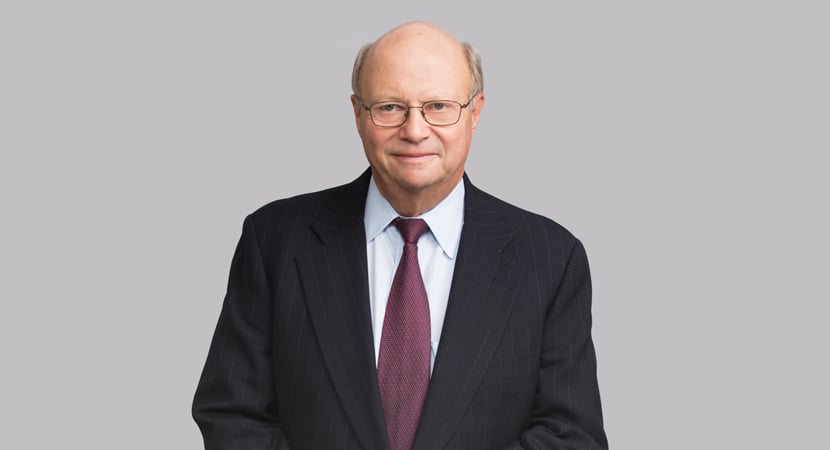The U.S. District Court for the Eastern District of Virginia held that the defendant’s use of the plaintiffs’ copyrighted works constituted fair use under 17 U.S.C. §107.
Defendant iParadigms owns and operates Turnitin, a proprietary technology system that evaluates the originality of written works in order to prevent plagiarism. Educational institutions contract with iParadigms and require their students to submit their written works via Turnitin. When the student work is submitted to Turnitin, the system compares the work electronically to content available on the internet, student works previously submitted to Turnitin and commercial databases of journal articles and periodicals. Turnitin also has the ability to archive a student’s work upon its submission to Turnitin.
The plaintiffs each used Turnitin to submit their written works and agreed to the terms of the online registration agreement (a click-through or clickwrap agreement) which included a limitation of liability clause. However, the students had also written on their papers that they did not give permission for the papers to be archived. The defendant continued to archive all student-submitted works, including all the works submitted by the plaintiffs, and the plaintiffs subsequently filed suit, claiming that the defendant’s continued archiving of their works constituted copyright infringement.
The court examined the four fair use factors and concluded that the web site’s use was a fair use. First, it examined “the purpose and character of the use,” stating that if the new work is transformative or adds something new, it is strong evidence of a fair use. Citing to Perfect 10, Inc. v. Google, Inc., 487 F.3d 701 (9th Cir. 2007), in regard to use of works in a computer database, the court held that the use by the defendant was highly transformative, because the papers are used for an entirely different purpose, namely to prevent plagiarism and protect the students’ written works from plagiarism, whereas the original purpose of the students’ works was education and creative expression. “Defendant does this by archiving the students’ works as digital code and makes no use of any work’s particular expressive or creative content beyond the limited use of comparison with other works.”
Next, the court examined the nature of the copyrighted work, stating that this factor is of lesser importance because the allegedly infringing use makes no use of any creative aspect of the students’ works. Rather, the use relates solely to the comparative value of the works. The court held that this factor either favored neither party or favored a finding of fair use, because the defendant’s use in no way diminishes the incentive for creativity on the part of students.
Third, the court examined “the amount and substantiality of the portion used,” citing to Supreme Court precedent and stating that complete and entire use of the original work does not automatically preclude a finding of fair use. Citing again to Perfect 10, the court found that although the defendant must use the entirety of the original work to be successful in its plagiarism detection services, the use is highly transformative and highly beneficial to the public, and held that this factor either favored neither party or favored a finding of fair use.
Finally, the court examined the fourth fair use factor, the effect of the use upon the potential market for the copyrighted work, and found that it was clear that the defendant’s use of the plaintiffs’ works has caused no harm to the market value of the works. Rather, the defendant’s use has a protective effect, preventing others from using the plaintiffs’ works as their own and protecting the future marketability of the plaintiffs’ works.
The court also held that the online registration agreement, that contained a limitation of liability clause, was an enforceable contract and precluded the students’ copyright infringement suit against the defendant. The court reached this conclusion despite a defense of infancy by the plaintiffs, stating that “if an infant enters into any contract subject to conditions or stipulations, he cannot take the benefits of the contract without the burden of the conditions or stipulations.” The court, however, denied the defendant’s claim for indemnification against the plaintiffs because the indemnification language was contained in the web site terms of use and not the registration agreement, and the terms of use did not create an enforceable contract because users were not required to view or agree to the terms of use before using the web site.
Defendant iParadigms owns and operates Turnitin, a proprietary technology system that evaluates the originality of written works in order to prevent plagiarism. Educational institutions contract with iParadigms and require their students to submit their written works via Turnitin. When the student work is submitted to Turnitin, the system compares the work electronically to content available on the internet, student works previously submitted to Turnitin and commercial databases of journal articles and periodicals. Turnitin also has the ability to archive a student’s work upon its submission to Turnitin.
The plaintiffs each used Turnitin to submit their written works and agreed to the terms of the online registration agreement (a click-through or clickwrap agreement) which included a limitation of liability clause. However, the students had also written on their papers that they did not give permission for the papers to be archived. The defendant continued to archive all student-submitted works, including all the works submitted by the plaintiffs, and the plaintiffs subsequently filed suit, claiming that the defendant’s continued archiving of their works constituted copyright infringement.
The court examined the four fair use factors and concluded that the web site’s use was a fair use. First, it examined “the purpose and character of the use,” stating that if the new work is transformative or adds something new, it is strong evidence of a fair use. Citing to Perfect 10, Inc. v. Google, Inc., 487 F.3d 701 (9th Cir. 2007), in regard to use of works in a computer database, the court held that the use by the defendant was highly transformative, because the papers are used for an entirely different purpose, namely to prevent plagiarism and protect the students’ written works from plagiarism, whereas the original purpose of the students’ works was education and creative expression. “Defendant does this by archiving the students’ works as digital code and makes no use of any work’s particular expressive or creative content beyond the limited use of comparison with other works.”
Next, the court examined the nature of the copyrighted work, stating that this factor is of lesser importance because the allegedly infringing use makes no use of any creative aspect of the students’ works. Rather, the use relates solely to the comparative value of the works. The court held that this factor either favored neither party or favored a finding of fair use, because the defendant’s use in no way diminishes the incentive for creativity on the part of students.
Third, the court examined “the amount and substantiality of the portion used,” citing to Supreme Court precedent and stating that complete and entire use of the original work does not automatically preclude a finding of fair use. Citing again to Perfect 10, the court found that although the defendant must use the entirety of the original work to be successful in its plagiarism detection services, the use is highly transformative and highly beneficial to the public, and held that this factor either favored neither party or favored a finding of fair use.
Finally, the court examined the fourth fair use factor, the effect of the use upon the potential market for the copyrighted work, and found that it was clear that the defendant’s use of the plaintiffs’ works has caused no harm to the market value of the works. Rather, the defendant’s use has a protective effect, preventing others from using the plaintiffs’ works as their own and protecting the future marketability of the plaintiffs’ works.
The court also held that the online registration agreement, that contained a limitation of liability clause, was an enforceable contract and precluded the students’ copyright infringement suit against the defendant. The court reached this conclusion despite a defense of infancy by the plaintiffs, stating that “if an infant enters into any contract subject to conditions or stipulations, he cannot take the benefits of the contract without the burden of the conditions or stipulations.” The court, however, denied the defendant’s claim for indemnification against the plaintiffs because the indemnification language was contained in the web site terms of use and not the registration agreement, and the terms of use did not create an enforceable contract because users were not required to view or agree to the terms of use before using the web site.
-
 Partner
Partner -
 Partner
Partner -
 Co-Chair, Litigation
Co-Chair, Litigation -
 Chair, Luxury Brands; Co-Chair, Advanced Media and Technology; Chair, Intellectual Property Protection
Chair, Luxury Brands; Co-Chair, Advanced Media and Technology; Chair, Intellectual Property Protection -
 Partner
Partner -

-
 Legal Publications Editor
Legal Publications Editor
)

